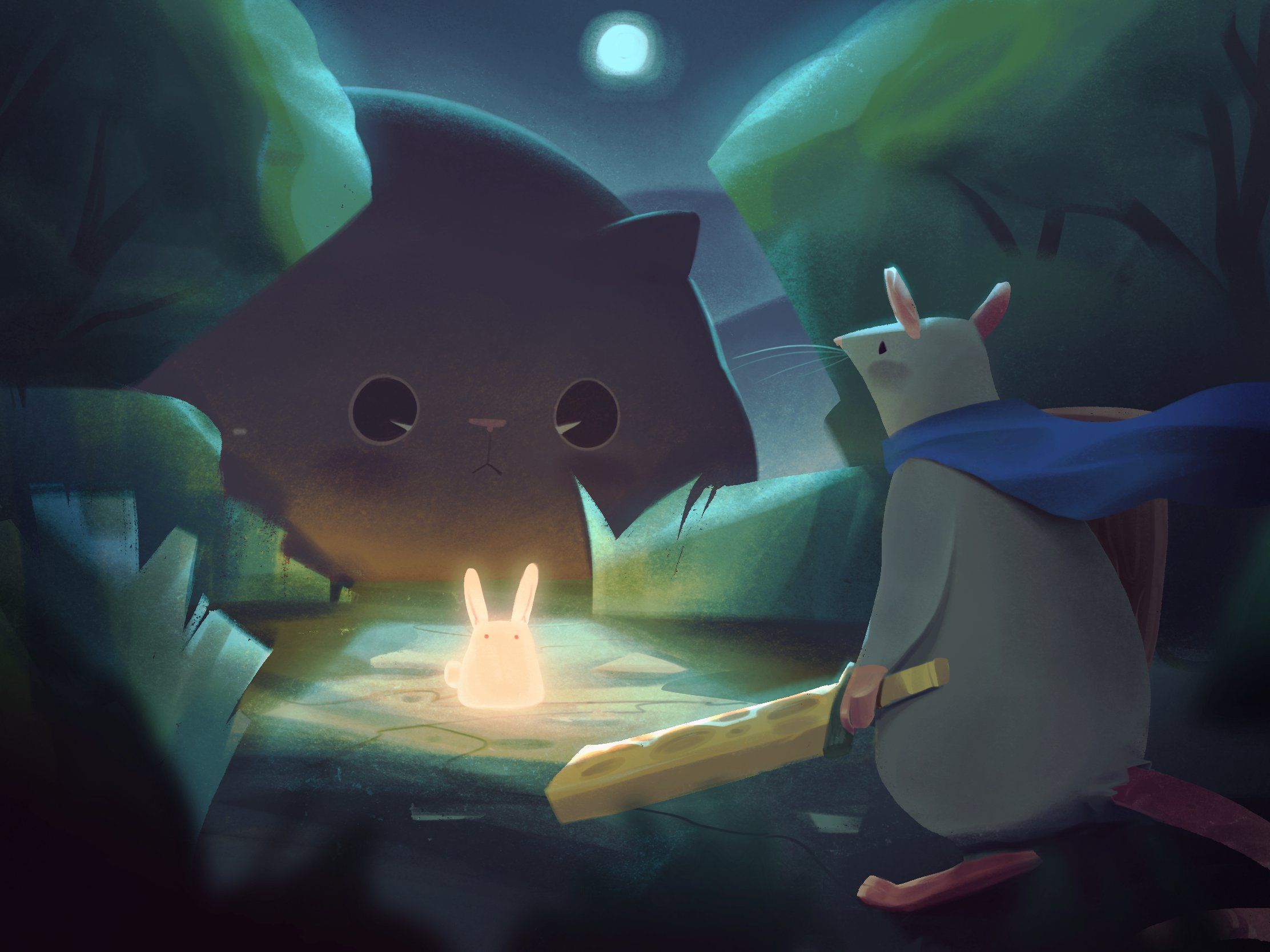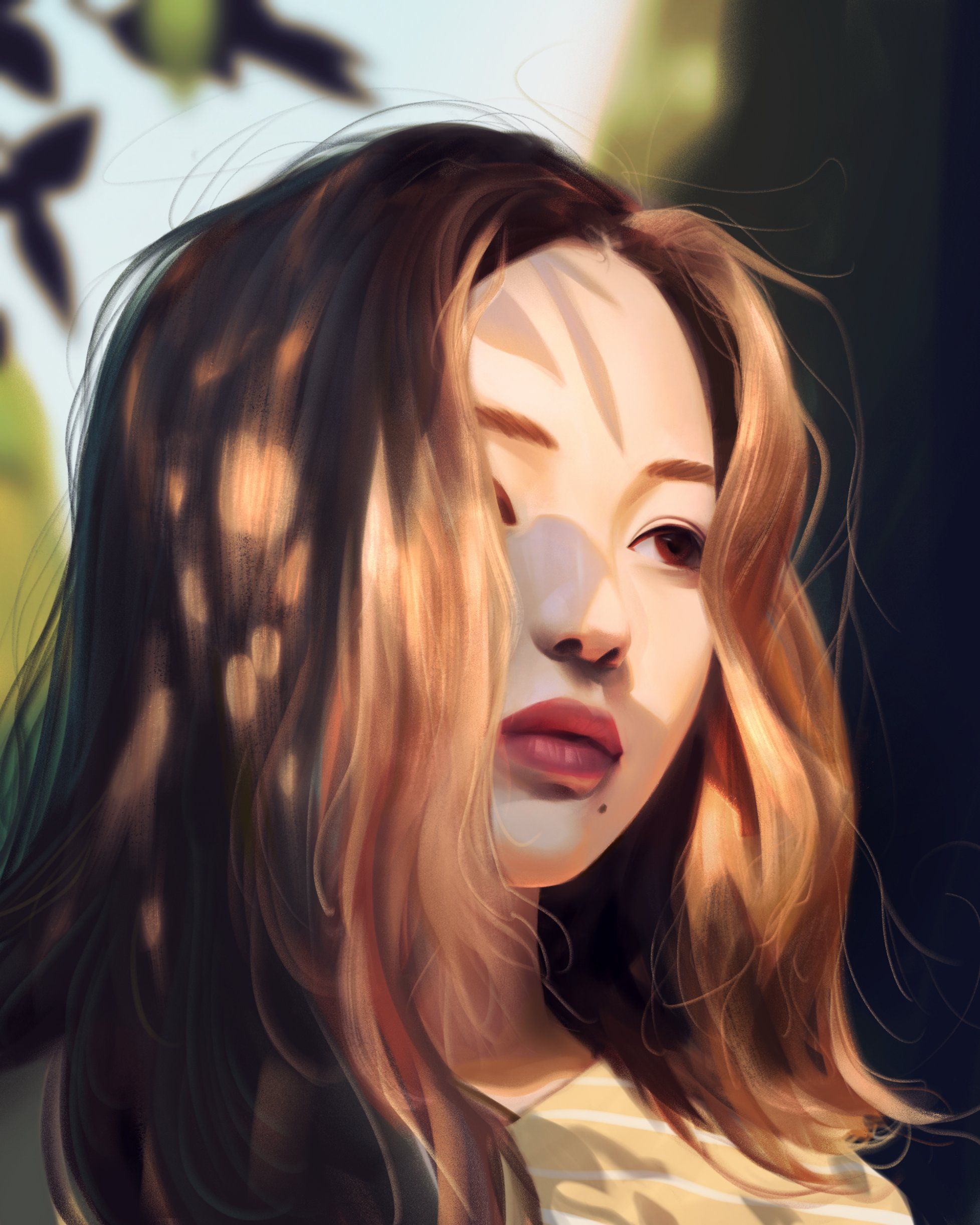
Jimmy Xia is an American artist, a lead illustrator for Plaid Hat Games, and has an incredible talent for lighting and storytelling in his artworks. We recently chatted with him about working on the road, staying inspired through the work of other artists, and practicing art growing up by drawing anime characters.
Hi Jimmy! Where are you from? I’m from Boston, Massachusetts, but I’m not currently based there as I’ve been traveling around this past year. I recently moved to New York City for the next four years for medical school.
How long have you been painting? I started drawing at an early age, when I was 3 or 4. I started by trying to draw helicopters and cars and gradually transitioned into obsessively drawing Dragon Ball Z characters. I didn’t start getting serious about painting, specifically digital painting, until I was in high school.
How would you describe your style of work? I would describe my work as colorful and lighthearted with an emphasis on lighting and storytelling. There are a lot of western and eastern influences in my style as I’ve found myself at the crossroads of both artistic cultures throughout work and play.

What would you say is your strongest skill as an artist? Perhaps lighting. It’s definitely my favorite thing to push in most of my paintings, and I think that the people who recognize my work likely recognize it due to the way that I light and lay out my compositions.
Do you have any tips to offer to aspiring artists? My biggest tip is to keep on drawing for the sake of drawing — keep on creating with deliberate improvement in mind. It goes without saying that practice makes better, but it’s really the small incremental improvements that lead to big breakthroughs in one’s skill level. It’s not a field that rewards its players with instant gratification, and that’ll be a turn off for many.
However, improvements come faster if you’re deliberate with what you create and have a goal in mind with each piece.

When your inspiration is running low, how do you refuel? I’ve found that inspiration comes in two forms— motivation and subject-matter. To get motivated, I visit sites like ArtStation and surround myself with the amazing artwork of other artists. Seeing what they’ve been able to accomplish inspires me to pick up my pencil and draw. But when I’m unsure what I want to draw, I either begin sketching from life or from sites like Pinterest and Instagram. There’s usually a couple interesting things that I see that I like, specifically portraits, fashion, animals, and cool graphic design.
When creating an artwork, where do you start, and how do your pieces evolve? I usually have a pretty consistent way that I set up my paintings, and I’ve found that this produces the best results for me. I do a quick under-sketch layer, make a slightly more detailed sketch layer, block out the major colors, add in quick shadows, and light the scene with a combination of other layers. In the end, I also like to create an overpainting layer where I’ll implement small changes and fixes.
Do you need something happening in the background while you paint, or do you prefer to work without distraction? This is definitely a bad habit, but I like leaving YouTube on auto-play in the background. I have no idea what’s going on in the videos, but having a bit of background noise is essential for my sanity. I’ve found that working in total silence makes my brain zone in too hard, and while that level of focus is great for productivity, my brain feels pretty awful afterwards — like someone pan-fried it and garnished it with Sichuan pepper.

What projects are you working on right now? I’m working as an illustrator for a tabletop game company called Plaid Hat Games, and one of the games I worked on was recently announced — Comanauts. It was my first major project, and I was able to create a ton of characters, items, environmental scenes, and the cover to bring the story to life! I’ve always wanted my art to be the face of something awesome like this, so I’m incredibly grateful to have been given the opportunity to do so. There’s another title that features a ton of my work, but that has yet to be announced.
How has Procreate changed or affected the way you work as an artist? As an artist, I’m not afraid to take my work on the road or to relocate myself in new places for months at a time. While it’s certainly nice to work on a large 24-inch tablet, I’ve found that for my professional work, I only need my iPad and Procreate. So this year, I’ve been traveling from Rhode Island to Los Angeles to Seattle, all the while being productive without missing a beat.
Do you have a favourite brush to use? I’ve created my own set of brushes, and my favorite one to use is a brush called ‘Form Control’ - it has a hard edge and a soft edge, so I end up using it in a bunch of different situations. If any readers are interested, I have all of my brushes up for free on my Gumroad page.

Find more of Jimmy's work through his Procreate Portfolio, Instagram, or his website.